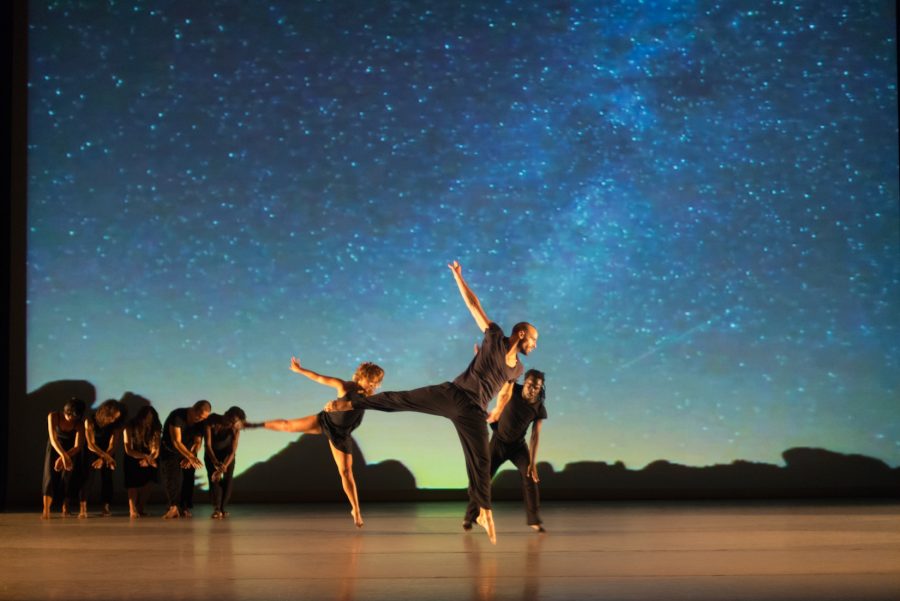Photo Courtesy of davidrousseve.com
Containing an overwhelming amount of content, David Roussève and his dance team REALITY’s performance of Stardust provided an experience that is difficult to put into words. I can assert with confidence, however, that I have never witnessed a live performance filled with such raw unadulterated passion.
The show focused on the marginalization and abuse of a black gay youth named Junior. The story of this adolescent’s adversity was revealed through text messages appearing on a screen behind the dancers. While Junior never appeared within the performance, the dancers of REALITY pristinely portrayed his narrative. The choreography miraculously merged itself with the music ranging from 1950s ballads to hip-hop.
I was initially jarred by the vibe the show aimed to give off. Two dancers randomly burst into staccato screams and aggressively encroached upon each other’s personal space. Numerous spectators began to laugh at the absurdity. It was only over time that I realized this avant-garde, emotion-packed piece did not intend to give off one sole “vibe.”
One of my favorite scenes centered on a gay couple lovingly holding one another as they swayed to jazz. With the lights dimmed low and a disco ball rotating above, the scene held a sentimental, youthful appeal. Without warning, the man’s first partner slowly fell from his grasp and another nearby dancer took his place. This began a hastening cycle of loss and recovery, until the man was left alone on stage, staring blankly into the audience. Sympathizing with the pain and isolation of this depiction, I came to the personal realization that regardless of one’s standing, this show contained countless takeaway moments that every spectator could relate to. This was because Roussève’s show was a pure work of art- it contained the universal language of emotion, which demands to be felt.
“Roussève is very good at thinking through what makes good theater as well as what makes good dance,” an attendee of the show, professor Christopher Phillips said. “The two forms are closely connected to each other, but it’s not just anyone who can make strong statements combining music, text, and movement.”
Roussève’s groundbreaking show portrayed a vast realm of connotative emotion that ranged from spiritual to sexual, holy to abusive, and blissful to heart wrenching.




















































































































